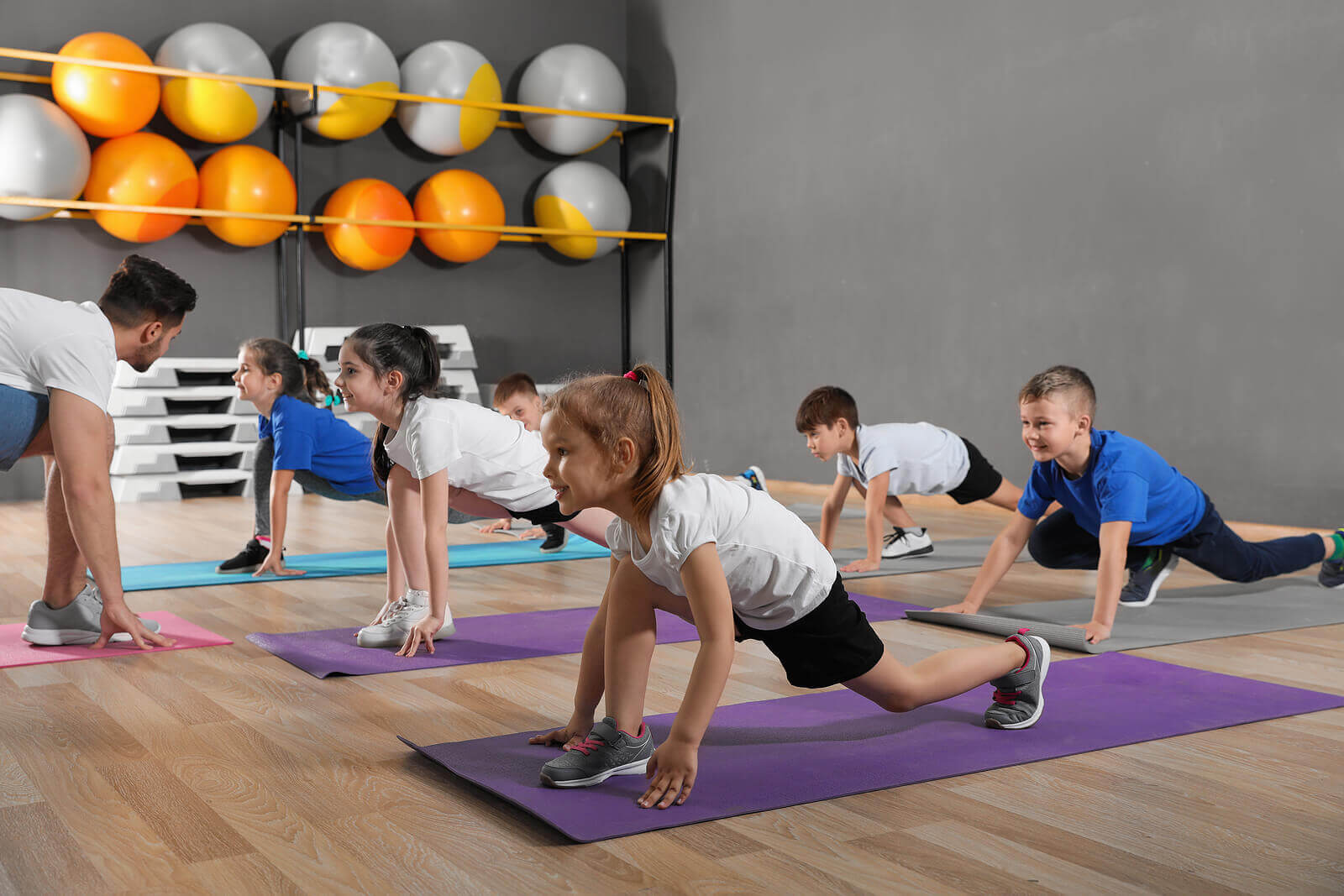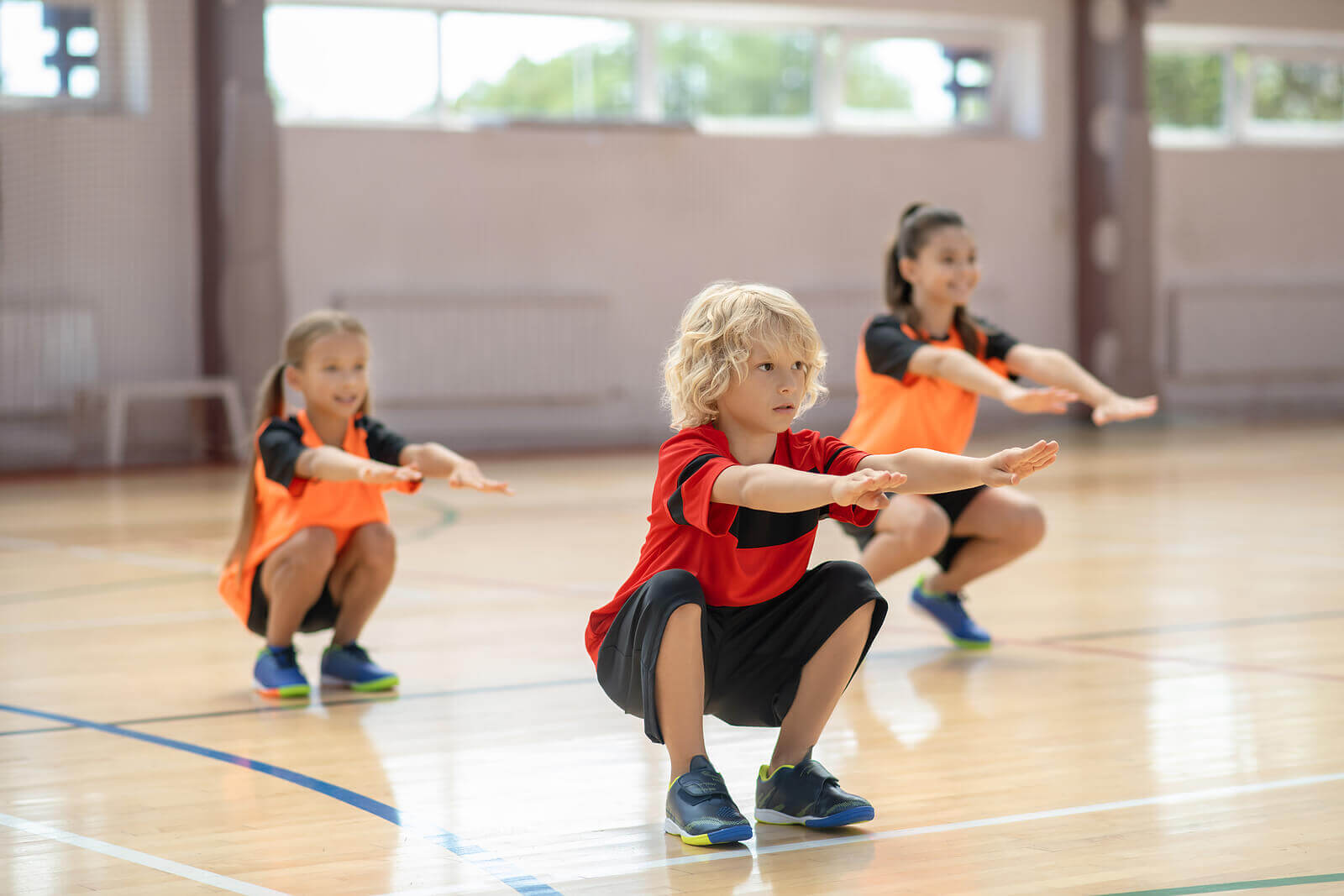Benefits of Endurance Training for Children

For many years, children’s training to increase strength and endurance has been controversial. However, we now know that the effects of endurance training for children are positive, because they increase their strength and muscle resistance. Plus, it helps improve coordination and motor skills.
Notwithstanding, it’s important to take different precautions in order to make this training beneficial for kids. This mainly involves a specific type of training, adapted to each kid’s age.
Benefits of endurance training for children
Endurance training promotes muscle and strength development by using exercise machines and resistance bands or their own weight. Children can practice endurance training and obtain benefits for their development.

The mechanisms that allow changes in adults’ strength are the same in the case of children. However, when children’s strength increase, their muscles don’t grow.
Furthermore, endurance training can improve neural mechanisms in children, such as:
- Coordination and motor skills.
- Activation of motor units.
- Other neural adaptations.
On the other hand, strength training may help children improve their physical state, improve their sport performance, burn calories and build strong bones. Strength training also helps children improve their performance in any type of sports. All in all, it can improve body composition, strength and aerobic and anaerobic capacity.
Is it safe?
It’s very important to bear in mind that strength training for children isn’t a reduced-weight version of adults’ training. For children to train in resistance, they need to learn adequate techniques and proper use of training equipment. Furthermore, they need to be monitored by personal trainers who are specialized in working with children.
Bearing this information in mind, strength training is safe for children. Also, when this is properly carried out, there’s no damage in bone development. However, before starting practicing strength training, children should visit their pediatrician.
The best way to learn the technique properly is without using any extra weight. Once they’ve mastered the technique, they can incorporate extra weight or resistance. Remember that children shouldn’t use adults’ exercise machines.
Moreover, children’s endurance training should always be monitored. It’s important to point out that every time children get hurt during training, it occurs because they fool around while nobody is watching.
When should children start practicing endurance training?
Children can start practicing endurance training once they control their balance and posture, and once they’re ready to follow instructions. This is usually possible when they’re 7 or 8 years old. Nevertheless, it’ll depend on each kid’s maturity level.

Even though before turning 10 they may develop strength, children between 10 and 15 years old are the ones who become really interested in this type of training.
It’s also important to point out that children’s endurance training has nothing to do with weight lifting or body building. In fact, the exercises they practice are adapted to their age and skills. For this reason, it’s so important to count on a personal trainer.
As far as endurance training concerns…
Many parents state that this type of training represents a big change in their children’s lives. And, they not only refer to their physical performance, but also to their own trust, concentration and happiness.
Remember that this type of training aims to improve strength, coordination and physical performance, within a nice, safe and healthy environment.
Finally, endurance training is only safe and beneficial if it’s appropriate for their age, progressive and monitored by a trainer.
For many years, children’s training to increase strength and endurance has been controversial. However, we now know that the effects of endurance training for children are positive, because they increase their strength and muscle resistance. Plus, it helps improve coordination and motor skills.
Notwithstanding, it’s important to take different precautions in order to make this training beneficial for kids. This mainly involves a specific type of training, adapted to each kid’s age.
Benefits of endurance training for children
Endurance training promotes muscle and strength development by using exercise machines and resistance bands or their own weight. Children can practice endurance training and obtain benefits for their development.

The mechanisms that allow changes in adults’ strength are the same in the case of children. However, when children’s strength increase, their muscles don’t grow.
Furthermore, endurance training can improve neural mechanisms in children, such as:
- Coordination and motor skills.
- Activation of motor units.
- Other neural adaptations.
On the other hand, strength training may help children improve their physical state, improve their sport performance, burn calories and build strong bones. Strength training also helps children improve their performance in any type of sports. All in all, it can improve body composition, strength and aerobic and anaerobic capacity.
Is it safe?
It’s very important to bear in mind that strength training for children isn’t a reduced-weight version of adults’ training. For children to train in resistance, they need to learn adequate techniques and proper use of training equipment. Furthermore, they need to be monitored by personal trainers who are specialized in working with children.
Bearing this information in mind, strength training is safe for children. Also, when this is properly carried out, there’s no damage in bone development. However, before starting practicing strength training, children should visit their pediatrician.
The best way to learn the technique properly is without using any extra weight. Once they’ve mastered the technique, they can incorporate extra weight or resistance. Remember that children shouldn’t use adults’ exercise machines.
Moreover, children’s endurance training should always be monitored. It’s important to point out that every time children get hurt during training, it occurs because they fool around while nobody is watching.
When should children start practicing endurance training?
Children can start practicing endurance training once they control their balance and posture, and once they’re ready to follow instructions. This is usually possible when they’re 7 or 8 years old. Nevertheless, it’ll depend on each kid’s maturity level.

Even though before turning 10 they may develop strength, children between 10 and 15 years old are the ones who become really interested in this type of training.
It’s also important to point out that children’s endurance training has nothing to do with weight lifting or body building. In fact, the exercises they practice are adapted to their age and skills. For this reason, it’s so important to count on a personal trainer.
As far as endurance training concerns…
Many parents state that this type of training represents a big change in their children’s lives. And, they not only refer to their physical performance, but also to their own trust, concentration and happiness.
Remember that this type of training aims to improve strength, coordination and physical performance, within a nice, safe and healthy environment.
Finally, endurance training is only safe and beneficial if it’s appropriate for their age, progressive and monitored by a trainer.
All cited sources were thoroughly reviewed by our team to ensure their quality, reliability, currency, and validity. The bibliography of this article was considered reliable and of academic or scientific accuracy.
- Faigenbaum, A. y McFarland, J. (2016). ENTRENAMIENTO DE RESISTENCIA PARA NIÑOS. Diario de salud y estado físico de Acsm , 20 (5), 16-22. doi: 10.1249 / ajuste.0000000000000236
- Fortalecimiento muscular para niños. (2020). Disponible en: https://www.mayoclinic.org/es-es/healthy-lifestyle/tween-and-teen-health/in-depth/strength-training/art-20047758
- Myers, A., Beam, N., & Fakhoury, J. (2017). Resistance training for children and adolescents. Translational Pediatrics, 6(3), 137-143. doi: 10.21037/tp.2017.04.01
- Strength Training by Children and Adolescents. (2008). PEDIATRICS, 121(4), 835-840. doi: 10.1542/peds.2007-3790
- Sugimoto, D., Stracciolini, A., Dawkins, C., Meehan, W., & Micheli, L. (2017). Implications for Training in Youth. Strength And Conditioning Journal, 39(2), 77-81. doi: 10.1519/ssc.0000000000000289
This text is provided for informational purposes only and does not replace consultation with a professional. If in doubt, consult your specialist.








